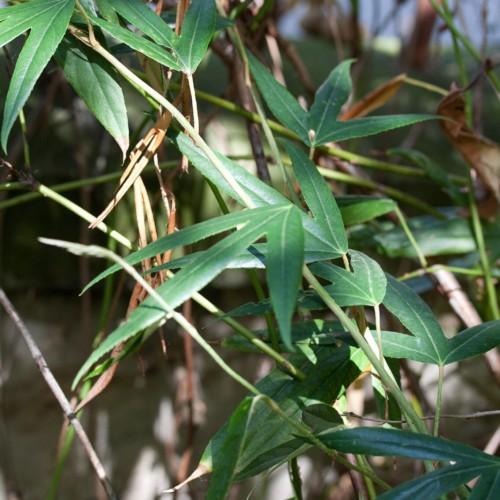
rubus
Rubus henryi var. bambusarum
Cycle:
Perennial
Watering:
Average
Hardiness Zone:
6 - 9
Flowers:
Flowers In Summer
Sun:
Full sun,part shade
Fruits:
Fruits Ready In
Edible:
Yes
Leaf:
Yes
Growth Rate:
Low
Maintenance:
High
Salt Tolerant:
Yes
Care Level:
Medium
watering
Rubus henryi var. bambusarum requires regular watering to thrive. It should be watered often enough to keep the soil moist but not soggy. The exact amount and frequency of watering will depend upon the temperature, soil type, and amount of sunlight the plant receives. Generally speaking, the plant should be watered once every 4 to 5 days during periods of active growth. During periods of dormancy or colder weather, frequency should be reduced somewhat. When watering, enough should be applied that the top inch or 2 of soil is moistened. If possible, it is best to water with rainfall or water that has been collected in rain barrels.
sunlight
Rubus henryi var. bambusarum is a plant species that requires full sun to partial shade. It is best grown in well-drained soils that are kept consistently moist, but not saturated. This plant should be placed in an area of the garden where it will receive around 6 to 8 hours of direct sunlight each day, for optimal growth and flowering. When grown in optimal conditions, the plant can produce an abundance of flowers in spring and summer, and an attractive display of vibrant foliage and berries in the fall.
pruning
Rubus (Rubus henryi var. bambusarum) should be pruned once a year, when the plant is dormant in winter. Pruning should be minimal and careful; remove dead and damaged stems and any stems crossing in the center of the plant. Rubus should be kept trimmed to encourage plentiful flowering in the summer months.
